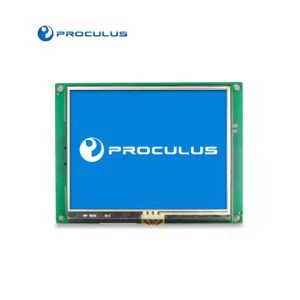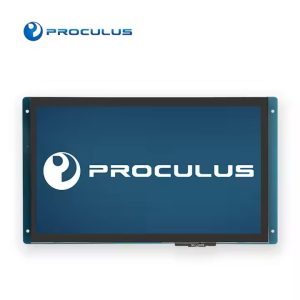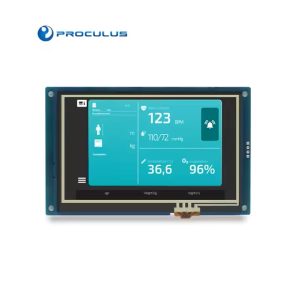How to Fix Dead Pixels on Your Screen: A Complete Guide
Dead pixels can be frustrating, especially when they stand out on an otherwise perfect screen.
Whether you’re working on a consumer device, a professional display, or an embedded system, understanding how to deal with these tiny defects can save you time, money, and headaches.
In this guide, we’ll cover what dead pixels are, how to fix them, whether they can be permanently repaired, and how to keep them from appearing in the first place.
What Are Dead Pixels and What Causes Them?
A dead pixel is a single pixel on your display that no longer lights up or changes color. It appears as a fixed black dot, and unlike “stuck” pixels (which may display a single color), dead pixels typically indicate a permanent failure. Common causes include:
- Manufacturing defects in the LCD or OLED panel;
- Physical damage from impact or pressure;
- Electrical issues that disrupt pixel control;
- Extended use and natural wear over time.
How to Fix Dead Pixels: Effective Methods You Can Try
Strictly speaking, a dead pixel (one that no longer responds to electrical signals) cannot be repaired. Once the pixel’s transistor fails, it’s a permanent hardware defect.
However, in many cases, what appears to be a dead pixel is actually a stuck pixel, a pixel frozen in one color due to a control signal glitch.
Stuck pixels can sometimes be improved or restored using the following approaches:
- Pixel-cycling software: Specialized programs rapidly flash color patterns across the screen to “wake up” a non-responsive sub-pixel. This can work if the issue is signal-based rather than physical damage;
- Warm-up periods: Allowing the display to run for extended periods at varying brightness levels can occasionally help a stuck pixel realign electrically;
- Professional inspection: If you’re unsure whether a pixel is dead or stuck, a technician with diagnostic tools can confirm the cause and advise on repair or replacement options.
Important: None of these methods will revive a true dead pixel, and aggressive DIY techniques (like pressing directly on the screen) can cause more harm than good.
Can Dead Pixels Be Permanently Fixed?
No. Once a pixel is truly dead, it’s a permanent hardware fault. Unlike stuck pixels, which are caused by temporary signal issues, a dead pixel means that the transistor driving that pixel has failed. The only reliable way to “fix” it is by replacing the entire display panel.
For most consumer devices, a single dead pixel may be within the manufacturer’s defect tolerance policy. But in high-precision fields like medical imaging, aerospace, or industrial control systems, however, even one dead pixel can be unacceptable.
This is why buying from a manufacturer with rigorous quality control like Proculus Tech is critical: Reducing the risk of pixel defects from the start is far more effective than trying to repair them later.
How to Prevent Dead Pixels from Appearing
While a dead pixel cannot be revived once it occurs, there are proactive measures you can take to reduce the chances of it happening in the first place.
Good handling, proper operating conditions, and basic maintenance can extend the lifespan of your display and keep image quality at its best.
Avoid pressing or tapping the screen unnecessarily
Applying excessive pressure can damage the delicate liquid crystal or OLED layers inside the panel.
Even light but repeated tapping (especially with sharp objects like pens) can stress the pixels over time.
Always use your fingertips or an approved stylus, and avoid pressing on areas that don’t require touch input.
Use a surge protector to prevent electrical damage
Voltage spikes caused by unstable power sources or lightning strikes can damage pixel control circuitry.
A high-quality surge protector acts as a safety buffer, absorbing sudden surges before they reach your display.
This is especially important in industrial environments or regions with inconsistent power supply.
Keep your display clean and dust-free
Dust and debris can trap heat, scratch protective layers, or interfere with capacitive touch sensors.
Clean your screen regularly with a soft, lint-free microfiber cloth and a gentle screen-safe solution.
Never spray liquid directly onto the display. Always dampen the cloth first.
Operate within recommended temperature and humidity ranges
Displays are designed to perform within specific environmental limits. Extreme cold can cause pixel response times to slow or freeze, while excessive heat can damage internal components and adhesives.
High humidity may lead to condensation inside the panel, increasing the risk of electrical shorts.
Check your display’s datasheet or manual for the ideal operating range and avoid prolonged exposure outside those conditions.
Fix Dead Pixels on Embedded Displays: Why It Matters
![]()
In everyday consumer electronics, a dead pixel might be a minor annoyance. In embedded applications, however, it can have far greater consequences.
Industrial automation systems rely on precise visual feedback to monitor processes. Medical devices demand flawless clarity to ensure accurate readings.Smart kiosks and control panels are judged not only on functionality but also on presentation.
One tiny black dot can undermine user confidence and perceived quality.
Dead pixels in embedded displays can impact operational accuracy, reduce readability in critical zones of the interface, and create costly downtime if the display must be replaced.
Since dead pixels cannot be physically repaired, prevention through careful sourcing and high-quality manufacturing is the most effective strategy.
Proculus Tech: Reliable Displays with Minimal Pixel Defects
At Proculus Technologies, we understand that in professional and embedded environments, display reliability is non-negotiable.
That’s why our UART, Android, and HDMI modules undergo rigorous inspection and pixel-by-pixel testing before they leave the factory. Our production process includes:
- Stringent quality control at multiple manufacturing stages;
- Advanced LCD panel sourcing from trusted suppliers with proven defect rates below industry averages;
- Environmental stress testing to ensure stability under varying conditions.
This commitment results in displays with exceptionally low pixel defect rates, giving engineers and businesses the confidence that their products will look (and perform) flawlessly for years.
Conclusion
Dead pixels are permanent and cannot be repaired individually, meaning the only real “fix” is full panel replacement. In embedded systems, avoiding this issue altogether is the best approach.
That’s why partnering with a display manufacturer that prioritizes quality from the ground up is essential.
By choosing Proculus Technologies, you’re not just buying a screen, you’re investing in a display solution built to maintain visual integrity, withstand demanding environments, and deliver the flawless performance your application requires.

 English
English


